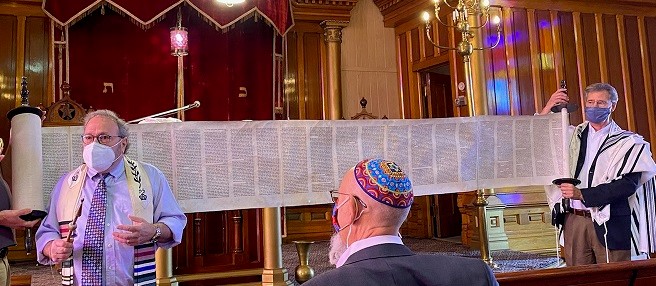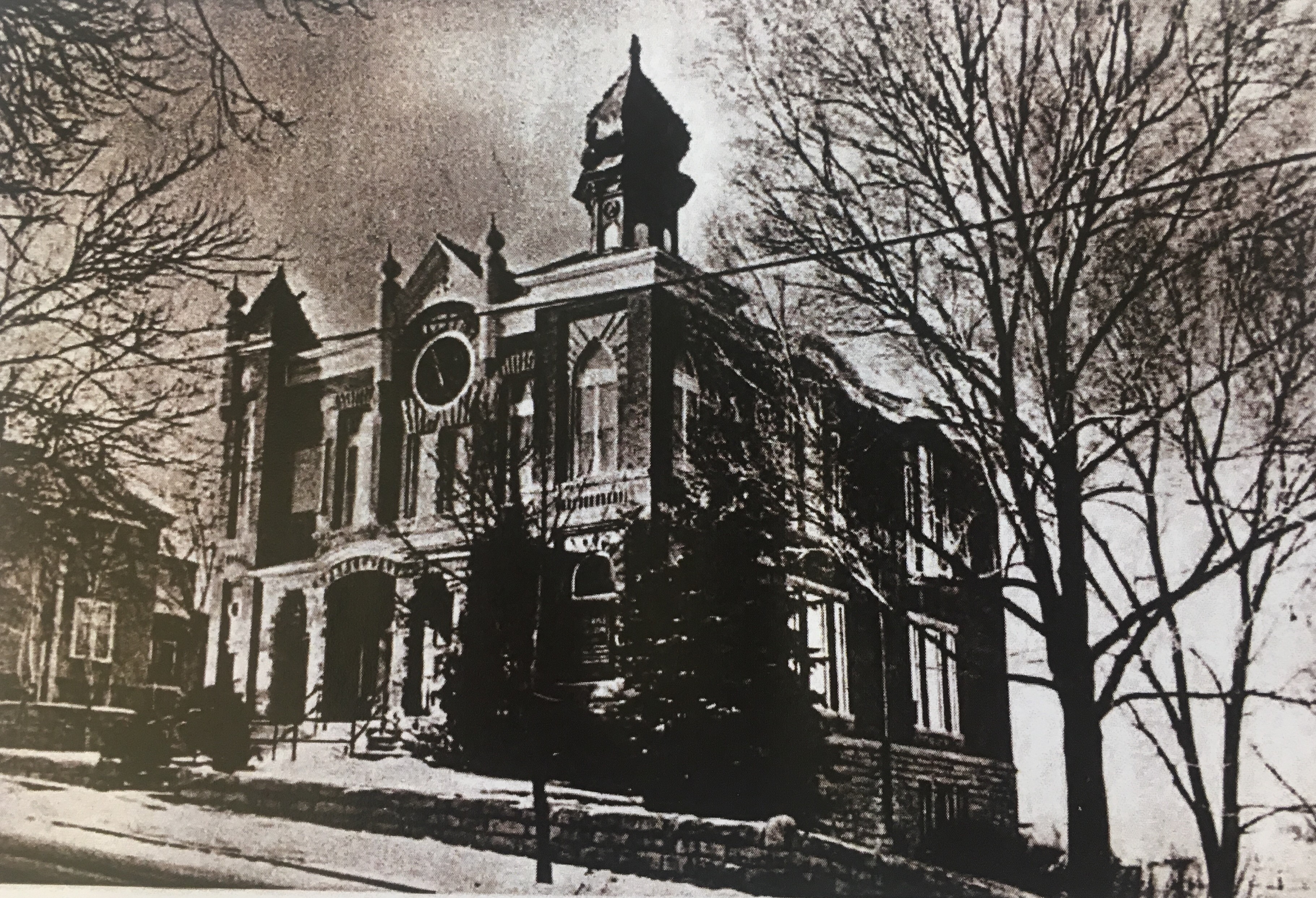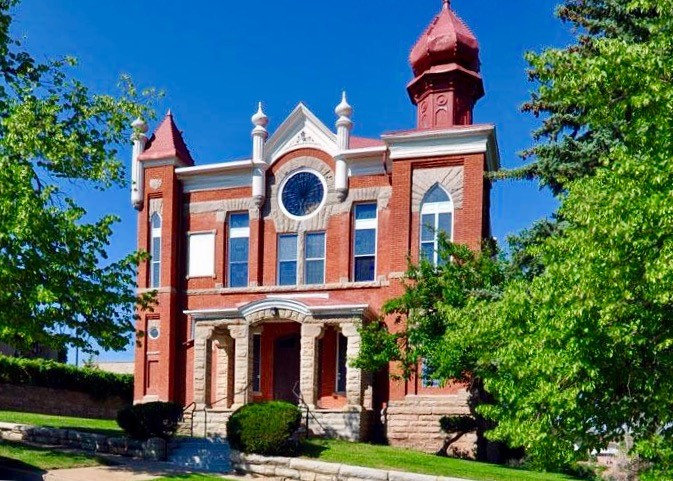
Story
Trinidad’s Temple Aaron Looks to the Past to Secure Its Future
In the spirit of renewal and perseverance, the people of southern Colorado and northern New Mexico have joined together to ensure a future for Trinidad’s Temple Aaron.
The migration of German and other ethnic Jews to the American Southwest is a story that played out in many southern Colorado and northern New Mexico communities—towns like Pueblo, Albuquerque, Santa Fe, Las Vegas, and Raton. And it’s epitomized in the development of Trinidad, Colorado.
Temple Aaron in Trinidad is one of the oldest continuously operated synagogues in its original location west of the Mississippi. It stands in testimony to the pioneering Jews of the community, who migrated westward in the late nineteenth century to play a prominent role in the town’s development. In fact, Trinidad’s first mayor, Samuel Jaffa, was Jewish, and members of the Jewish community owned and operated many of Trinidad’s first businesses—from dry goods, general merchandise, clothing, shoes, and stationery stores to ice cream and confectionary shops and other retail and wholesale enterprises.
But it’s the magnificent Temple Aaron building, standing high on the hill at the corner of East Second Street and South Maple, that is the Jewish community’s lasting legacy in the region.
Temple Aaron is a historic property within El Corazón de Trinidad National Historic District and opened its doors in 1889. Prolific architect Isaac Hamilton Rapp designed the Temple in the Exotic Revival Style, making it one of the few synagogues of its type in the United States. Elements of the Exotic Revival style include such motifs as Turkish “onion” domes and Moorish minarets, both distinctive hallmarks of Temple Aaron. The synagogue’s twelve geometric colored glass windows, symbolic of the Twelve Tribes of Israel, are reminiscent of the first colored glass windows found in other Eastern synagogues and Islamic mosques. The Temple’s distinctive pressed metal patterned roof has a complex structure featuring many peaks and valleys and includes two towers on the east façade of the building.
In October 2020, the History Colorado State Historical Fund awarded Colorado Preservation, Inc. a $50,000 grant for roof investigations, construction documents, and emergency repairs to stop leakage and set the stage for a full roof replacement. The Temple will match the grant with $29,250 of its own funds. The Temple board also garnered a $3,000 grant from the Rose Community Foundation for security-related improvements to the building. The story of Jewish migration to Trinidad, coupled with the Temple’s spectacular architecture, will inform a National Historic Landmark nomination now underway for Temple Aaron and its consideration by the National Park Service.
Over time, the Jewish communities in many of these towns have dwindled as people have migrated to the bigger cities of the West. By late 2017, it appeared that Temple Aaron might have to close its doors permanently as its longtime caretakers, the Rubin family, were forced to put the building on the market. This led to its placement on Colorado’s Most Endangered Places list by Colorado Preservation, Inc. in 2017, which helped raise awareness about the threats to the building’s future and prompted a determined group of Jews in the broader area to rally to save the synagogue and begin reconstituting as a new, regional kind of congregation.

Rabbi Rob Lennick of the New Mexico Jewish Federation leads recent Rosh Hashanah services at Temple Aaron, with David London of Boulder (not pictured, left) and Kim Grant of Denver, right, holding each end of the revealed Torah scroll. Longtime member Ron Rubin, who grew up at Temple Aaron, looks on. Photo by Sharon Niederman.
In the past three years, the Temple has sponsored many religious services, such as Passover and Rosh Hashanah, and has hosted educational programs such as community open houses and the dedication of a historic marker from the Jewish American Society for Historic Preservation to commemorate the Temple’s 130th anniversary in 2019. The Temple board has also raised about $100,000 from other sources to set the stage for further rehabilitation efforts.
Most recently, the Temple hired its first rabbi since the late 1960s when it engaged Rabbi Rob Lennick, who also serves as director of the New Mexico Jewish Federation. Looking ahead in the spirit of Hanukkah and the rededication of the ancient temple in Jerusalem, the people of the region—from Albuquerque to Boulder and from Denver to Pueblo—have joined together in a program of preservation and renewal to ensure a future for Temple Aaron.
More from The Colorado Magazine
When Family Lore is Fueled by Latkes Hanukkah celebrates resiliency—something we’ve all been tapping into this year. It also means latkes. Love ’em, hate ’em, agree or disagree about what goes on ’em, the ritual and aroma and taste of these potato pancakes are part of what makes Hanukkah what it is. Emily Hope Dobkin, the founder of Betterish, shares a whole latke love.
“Is America Possible?” The Space Between David Ocelotl Garcia’s and Norman Rockwell’s Freedom of Worship
Colorado Is My Classroom More than a century ago, open-air classrooms had a moment in response to another pandemic. Then it was tuberculosis, another era-defining airborne pathogen that attacked the respiratory system. And the results were encouraging. Could fresh air be part of the solution to school in the time of coronavirus?


